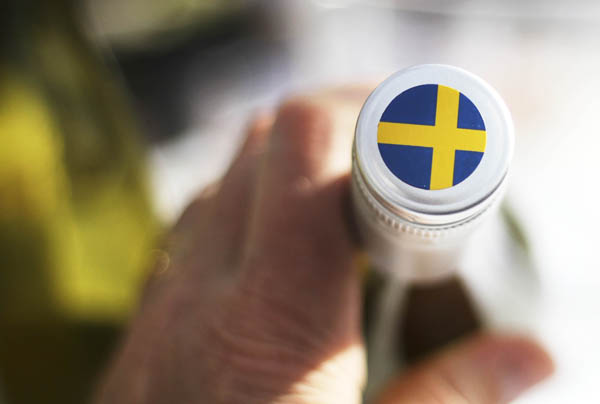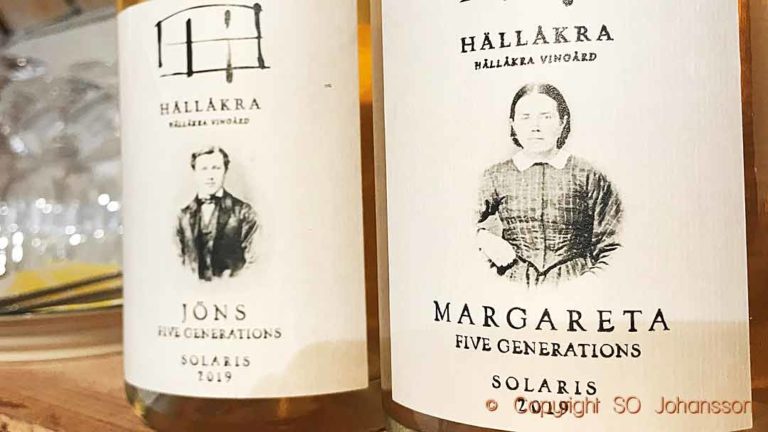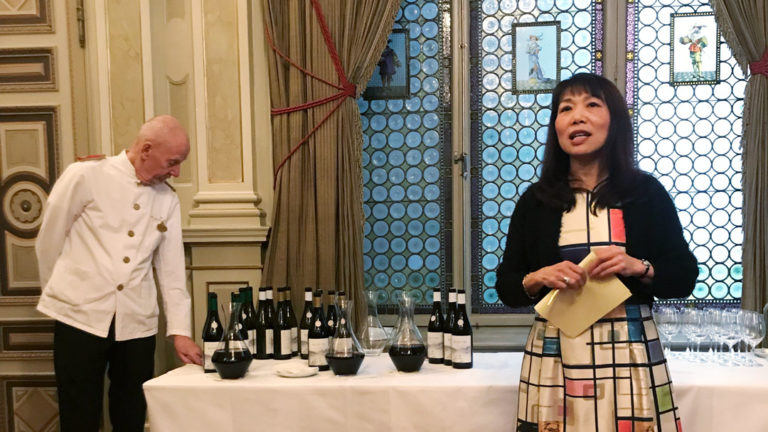A visit to Westervin in Härna, Östergötland
Not everyone happens to have a few acres of greenhouses that you do not know what to do with. But it helps if you want to grow wine in Sweden or in other northern climes. To cultivate wine far north is a challenge. The climate is not such that the vines thrive, even if in the northern regions they actually have more hours of sunlight during the growing season. The temperatures are not enough for the growing wine. Åke Wester had grown lettuce and strawberries in greenhouses and wanted to try something different: to grow wine. BKWine’s Peter Cronström went there in connection with a wine course at Södertörn University. Here is the trip report.
Åke Wester started planting vines when he retired in 2003. He wanted to try something new and no longer grow lettuce and strawberries in the large greenhouses he had.
Instead of demolishing the greenhouses he decided to try grapes. Mostly grapes for wine production. The facility includes 4.5 hectares of greenhouses. In addition he has about 1000 vines in open fields that have so far not been used for wine production as they are too young.
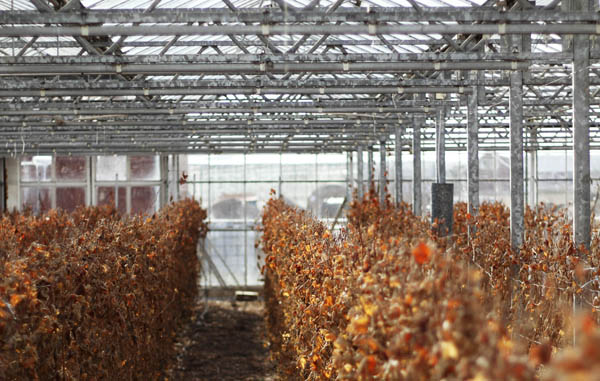
The grapes grown for wine production are cabernet franc, merlot, pinot noir, gewurztraminer, muscat, riesling, chardonnay and vidal. Approximately 3,000 litres of wine are produced annually. The wines are sold in Sweden in the special “on order” range delivered through Systembolaget and locally in the three monopoly shops in Linköping (the closest big city).
The grapes are organically grown, that is, without pesticides but the vineyard is not certified organic because of the cost. Normally the greenhouses not heated. Heating is only used if they need protection against frost and to melt snow on the roofs so that the greenhouses will not break.
A sunny growing season
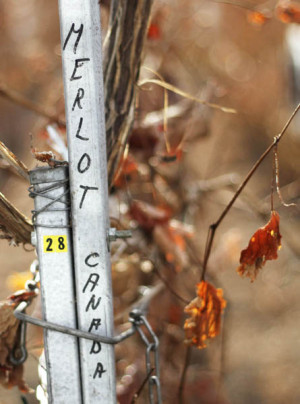
Unique to the culture in our latitudes is that we have more hours of sunshine during the growing season than in southern Europe. In open field the vines start growing later because the wine needs 10 degrees C to start flowering. Flowering is almost two months later in open fields than in the greenhouse.
Ake has two employees as winemaker, Christian Zetterdalh and Leif Ånell. They take care of all the practicalities in the vineyard. The only agent used during the growing period is sulphur lamps and nematodes to keep pests away, but as I mentioned no spraying. In addition, they have a rooster and a number of hens to keep the ground clean from pests.
Irrigation is done a few times in the spring because the vines do not get any rain. For the rest there is no need for irrigation because the vines’ roots have made their way down to the ground water, which is around 2 meters down.
Harvesting is done by hand. They have equipment for destemming and have a pneumatic press. Fermentation is done in stainless steel tanks. They use sulphur and add oak chips in some of the wines. They have their own provisional bottle washing and their own screw cap machine.
A small-scale production requires as much as a larger one and is also monitored by the national food safety authority. One example that was told was about adding sugar, chaptalisation, which may not be made without a permit in each case. (See footnote)
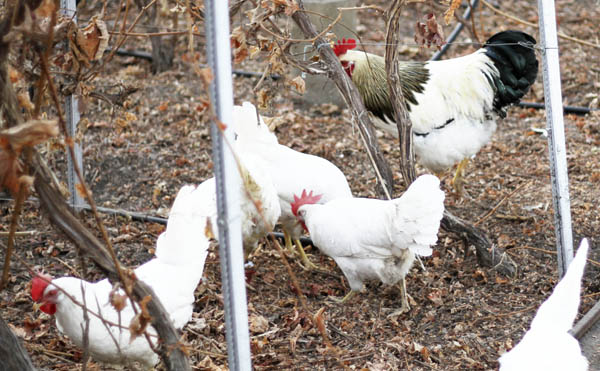
Many different wines
The tasting that we did was with six wines: 2013 Chardonnay, 2012 Muscat, 2012 Vidal Ice Wine 2013 Rosé of pinot noir and gewurztraminer, 2012 Merlot and 2012 Cabernet Franc. All the wines were very typical for the grape variety with good balance between acidity and fruit. The best wines were the Ice Wine that was sweet and floral, yet fresh, and the cabernet franc that had a dark red colour and an aroma of spices with astringent taste of spices and chocolate.
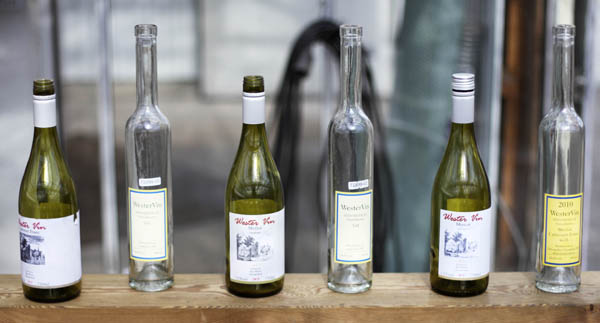
The chardonnay had an aroma of apples and a dry, fresh palate with hints of oak; the muscat wine was dry, fruity and aromatic; the rosé had a pinot noir character but with aromatic components; the merlot had a rough spiciness with some mint and oak character.
The vineyard is not yet profitable and would have had an even more difficult situation if the greenhouses had not already been amortised. It would be very difficult to make profitable a vineyard established from scratch in a greenhouse. To get any profit out of the growing you have to have relatively high prices and thus you are unable to compete on price. Instead, you have to compete with the quality and with a unique wine. One way to get a better margin is to sell abroad but so far they have only sold to Hong Kong once.
Westervin has a permit to do tastings on site and it is definitely worth a visit if you are near.
[hr]
Westervin’s website: www.westervin.se.
References:
- Excursion Guide to travel between Södertörn University and Westervin, 2014-03-22
- Westervin’s website, www.westervin.com
- Östgöta Mat’s website, www.visitostergotland.se/ostgotamat/
Peter Cronström writes on BKWine Magazine on wine tastings with wine merchants and importers.
Editor’s Footnote:
Chaptalisation
Chaptalisation involves adding sugar to the must before or during fermentation. The addition of sugar is made in order to increase the alcohol contents of the final wine (not to sweeten the wine). The sugar addition can either be “dry” sugar or liquid concentrated grape must. If you want nit-picking with the terminology the latter is called enrichment and not chaptalisation. (But in everyday language chaptalisation is often used for both ways.)
